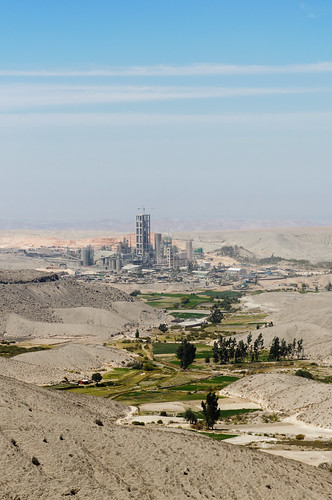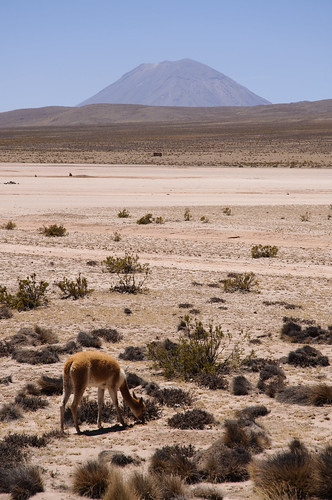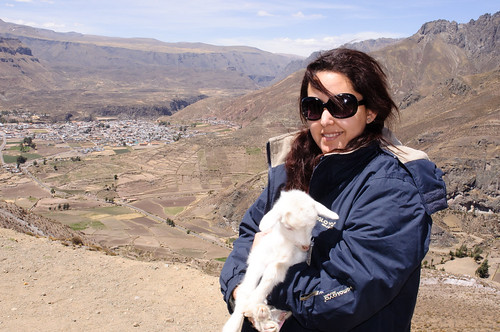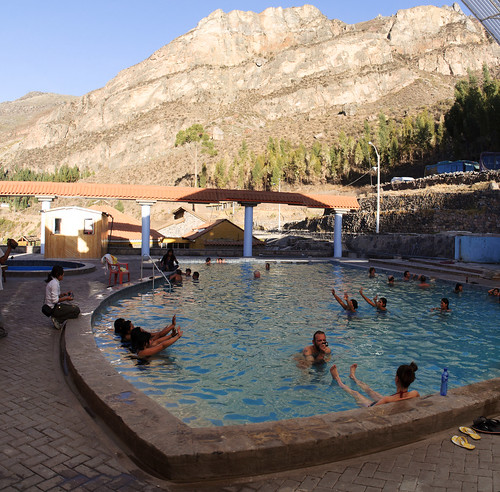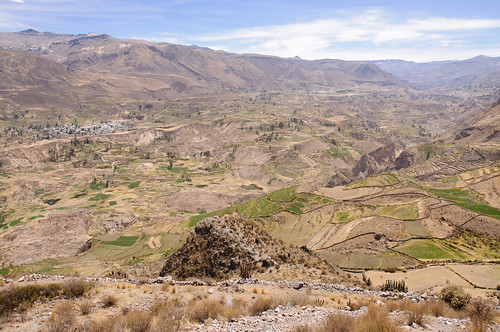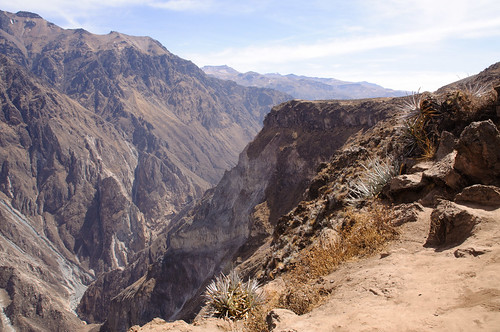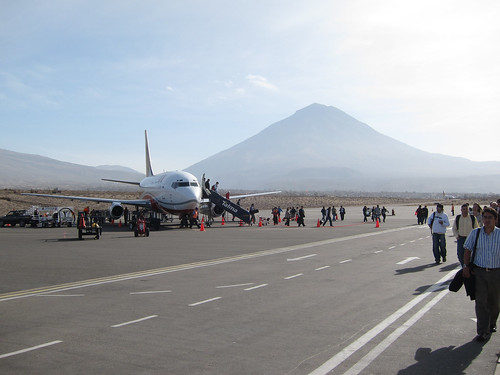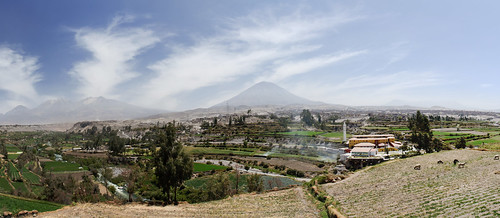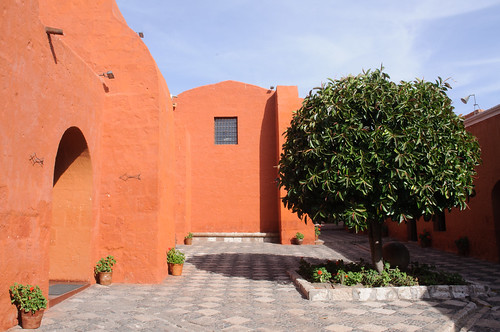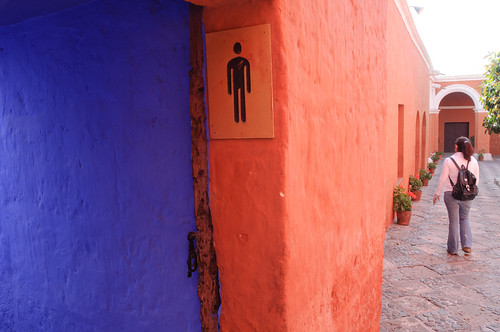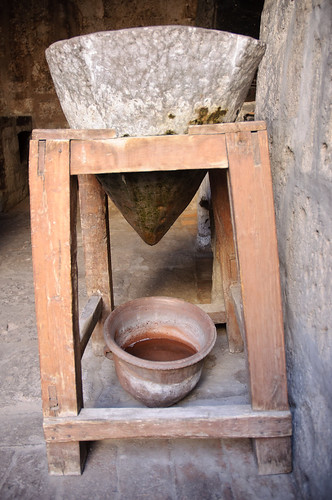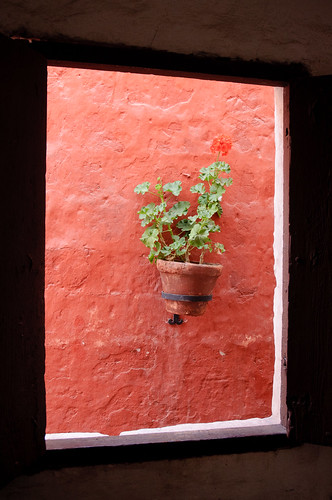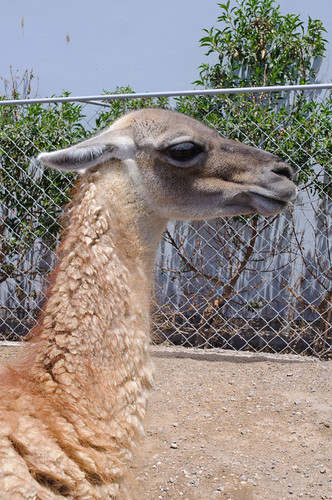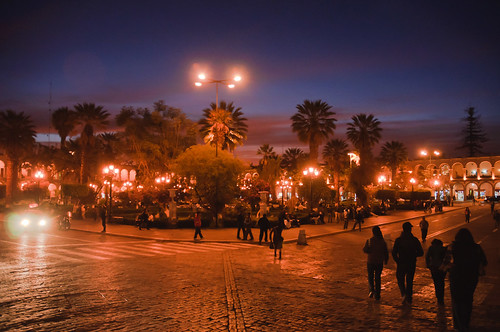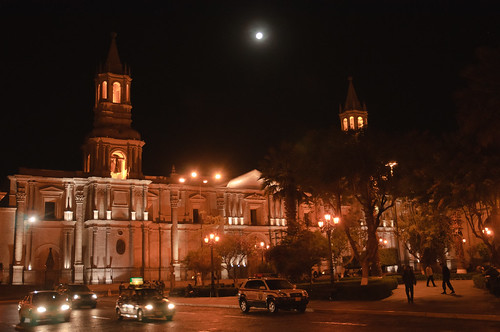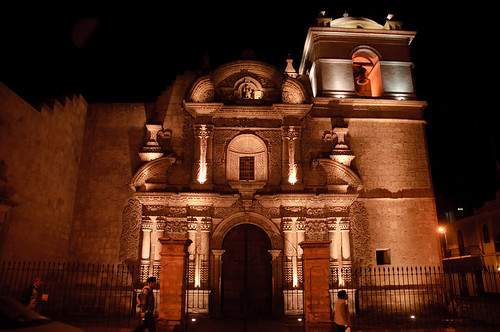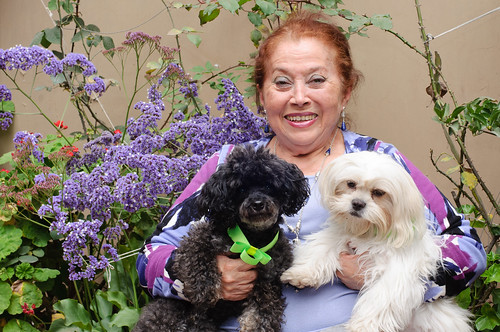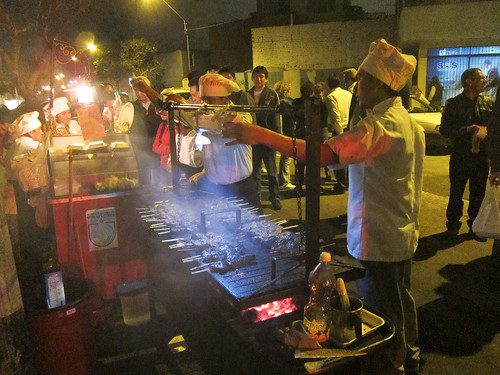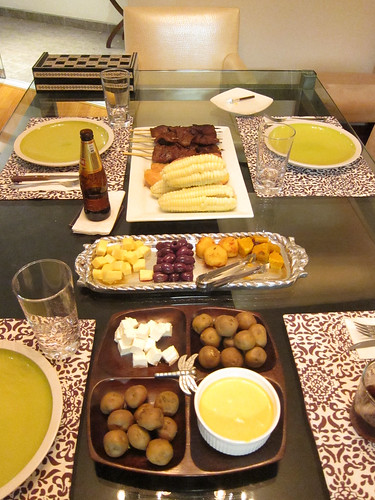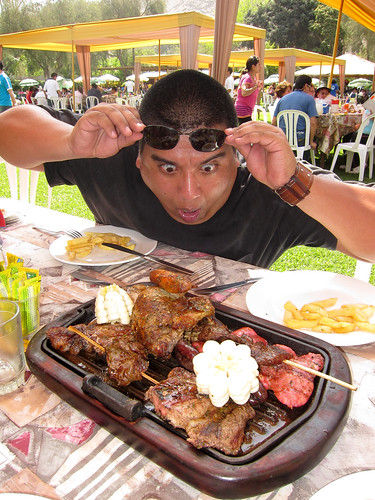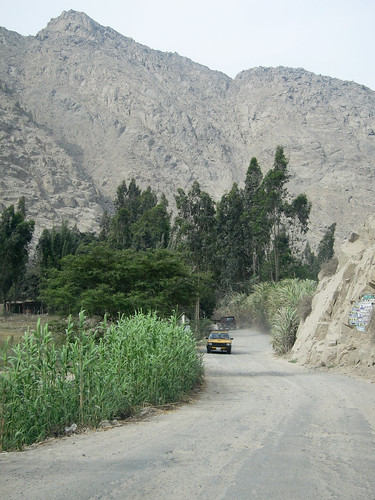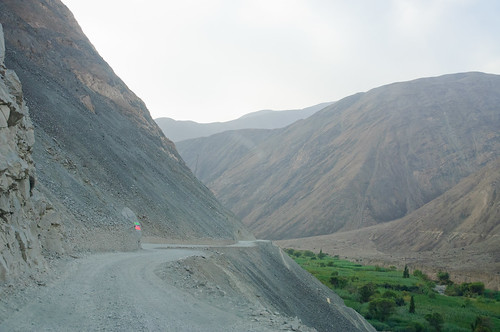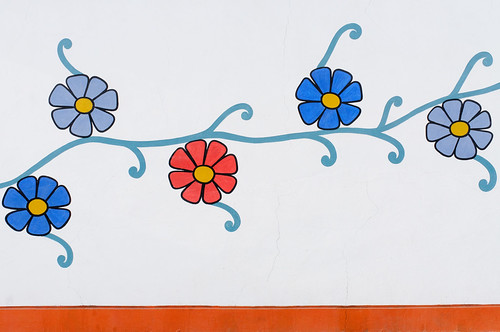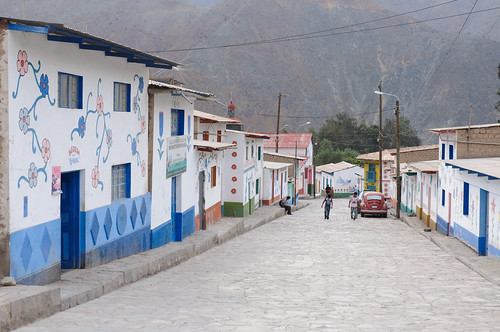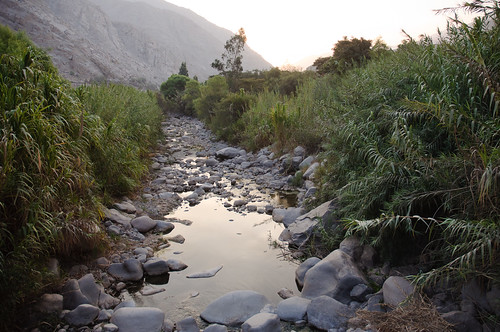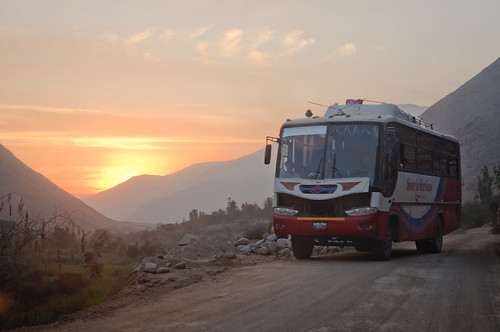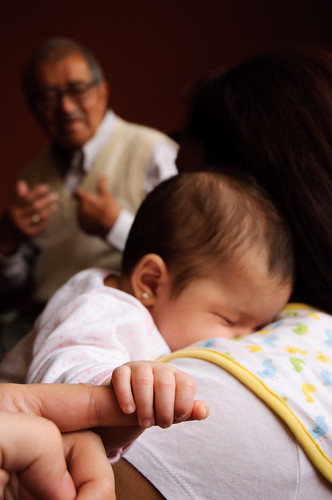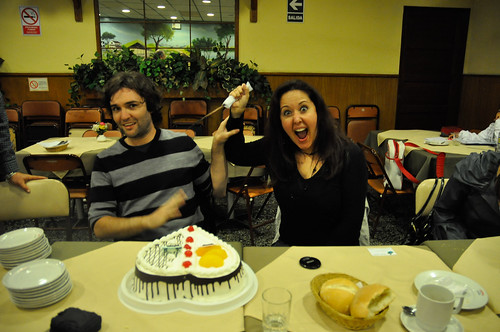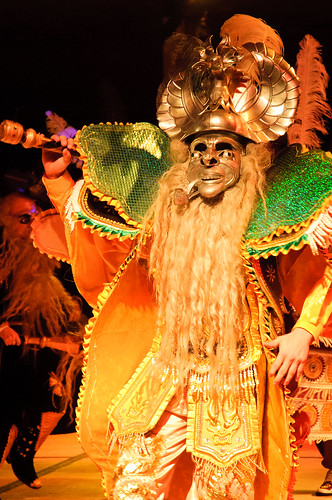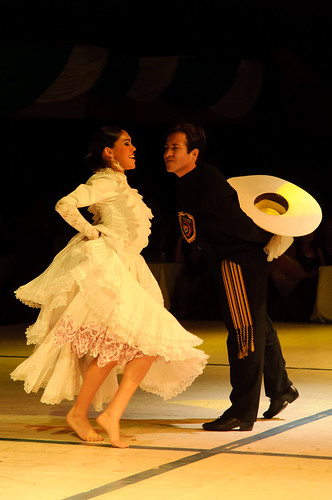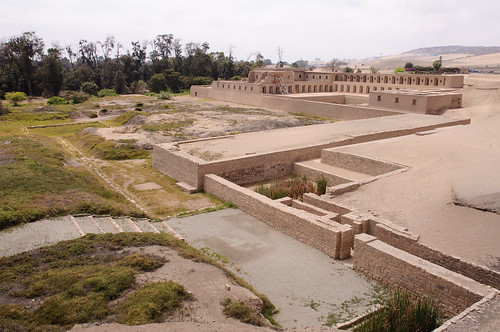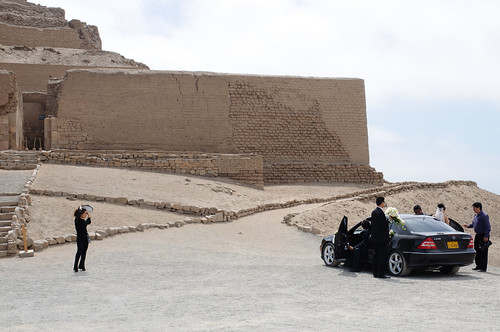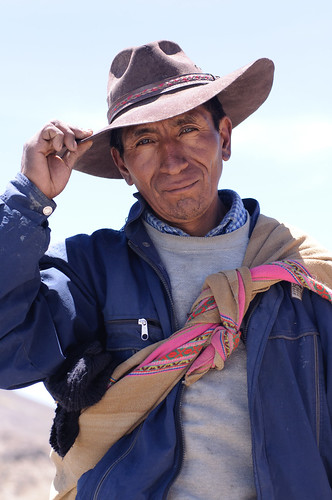From Arequipa we went on a guided tour of the Chivay/Colca Canyon region for a couple of days. The canyon is approximately four kilometres deep, making it about twice as deep as that of the Grand Canyon, so I was pretty excited about seeing that and possibly a Condor.
The small tour bus took us around the extinct volcano Chachani towards the town of Chivay where we’d be staying the night. We went past a huge processing plant, which I could only guess was some sort of cement factory. The landscape at this point was a contrast of pale grey dust, green valley and man-made structures:
Along the way there were many wild llama, gunacao and vicunya and some great views of volcano Misti:
I never expected to see flamingoes in this part of Peru, but there they were at high altitudes of around five kilometres, feeding in isolated wetlands.
The presence of the wetlands in such an otherwise barren landscape surprised me:
We came across a farmer (a photo of who appeared in a previous post) who had decorated his herd of llamas to attract tourists. The ruse worked fantastically.
Descending into the Chivay area we were treated to some fantastic views of the town while doing some roadside shopping.
A natural hot spring was a great way to relax at the end of the day, and this one had a great view.
From the top of our hotel in Chivay I was able to get a photo of the sunset over the mountains that we’d descended earlier in the day.
The tour the next day took us through the Colca Valley on the way to Colca Canyon. The were many spectacular views of the small towns and the terraced farming that supported them.
The Colca Canyon was very, very deep, and much wider than that of the Grand Canyon. It was fairly difficult to see the bottom of it, so I had to walk around to all the viewing points to get a good sense of how deep it was. I don’t think this was the deepest part either, as the road went further around the canyon but our bus tour did not.
Our last stop in the canyon was to view the condors. That required a bit of luck, and the whole hour we were there the ones we did see were too far off to get a decent photo. While leaving the viewing area, a condor did glide past our bus and was viewable for a few seconds. I chose to admire just how massive it was rather than try and grab a photo.
The full set on flickr is available here.
